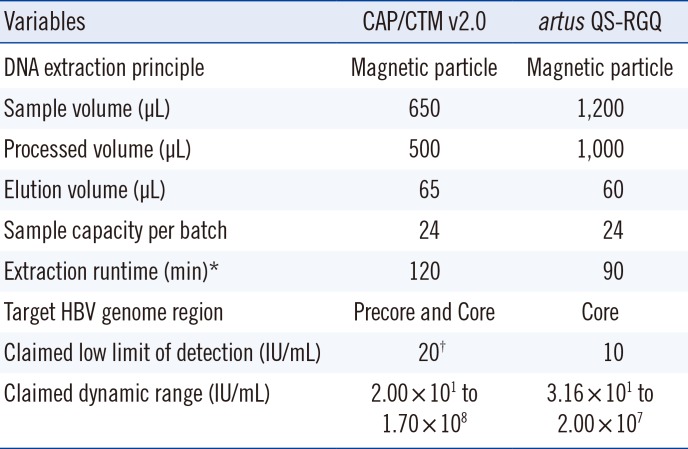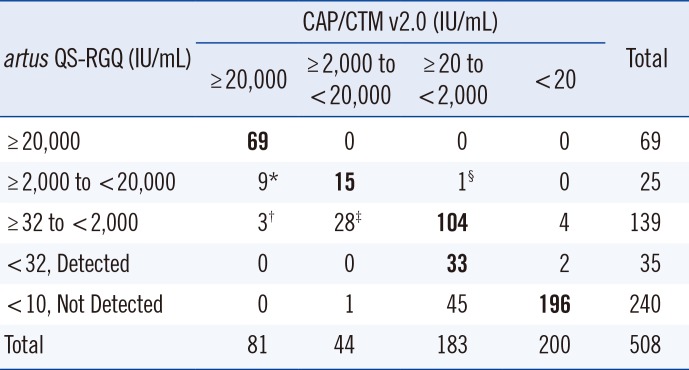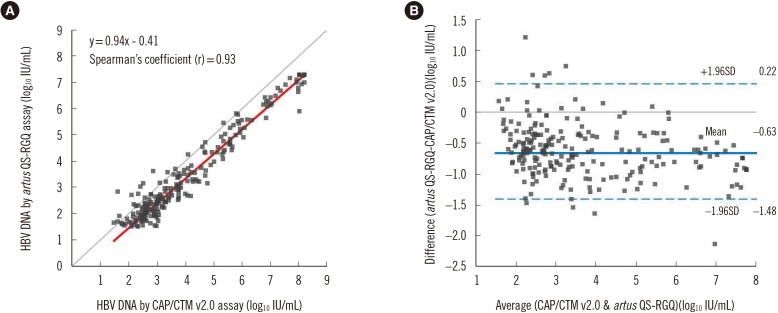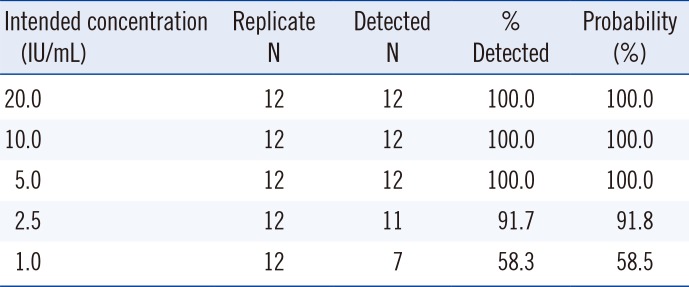2. Oakes K. Hepatitis B: prevalence and pathophysiology. Nurs Times. 2014; 110:12–16.
3. Lok AS, McMahon BJ. Chronic hepatitis B: update 2009. Hepatology. 2009; 50:661–662. PMID:
19714720.
4. Martin P, Lau DT, Nguyen MH, Janssen HL, Dieterich DT, Peters MG, et al. A treatment algorithm for the management of chronic hepatitis B virus infection in the United States: 2015 Update. Clin Gastroenterol Hepatol. 2015; 13:2071–2087. PMID:
26188135.
5. González R, Torres P, Castro E, Barbolla L, Candotti D, Koppelman M, et al. Efficacy of hepatitis B virus (HBV) DNA screening and characterization of acute and occult HBV infections among blood donors from Madrid, Spain. Transfusion. 2010; 50:221–230. PMID:
19682332.
6. Jiang JN, Huang ZL, He LX, Huang YH, Su MH, Xie R, et al. Residual amount of HBV DNA in serum is related to relapse in chronic hepatitis B patients after cessation of nucleos(t)ide analogs. J Clin Gastroenterol. 2015; 49:323–328. PMID:
25014234.
7. Stelzl E, Muller Z, Marth E, Kessler HH. Rapid quantification of hepatitis B virus DNA by automated sample preparation and real-time PCR. J Clin Microbiol. 2004; 42:2445–2449. PMID:
15184417.
8. Poljak M, Lepej SZ, Rode OD. Recent developments in serologic and molecular diagnosis of hepatitis B and C. Acta medica Croatica. 2013; 67:281–290. PMID:
24984327.
9. Ismail AM, Sivakumar J, Anantharam R, Dayalan S, Samuel P, Fletcher GJ, et al. Performance characteristics and comparison of Abbott and artus real-time systems for hepatitis B virus DNA quantification. J Clin Microbiol. 2011; 49:3215–3221. PMID:
21795507.
10. Yeh ML, Huang CF, Hsieh MY, Huang JF, Dai CY, Yu ML, et al. Comparison of the Abbott RealTime HBV assay with the Roche Cobas AmpliPrep/Cobas TaqMan HBV assay for HBV DNA detection and quantification. J Clin Virol. 2014; 60:206–214. PMID:
24809730.
11. Brichler S, Dziri S, Duhant A, Faleu G, Gordien E. P0543: Comparative evaluation of the artus HBV QS-RGQ assay and the roche cobas mpliprep/cobas taqman V.2 HBV test for the quantification of HBV DNA in plasma. J Hepatol. 2015; 62:S518–S519.
12. Fielder H, Javed S, Marques C, Wall G, Lange C, Tomlinson D. Quantitative detection of hepatitis B virus (HBV) DNA with the novel artus® HBV QS-RGQ Kit version 2. J Clin Virol. 2015; 70:S85.
13. Allice T, Cerutti F, Pittaluga F, Varetto S, Gabella S, Marzano A, et al. COBAS AmpliPrep-COBAS TaqMan hepatitis B virus (HBV) test: a novel automated real-time PCR assay for quantification of HBV DNA in plasma. J Clin Microbiol. 2007; 45:828–834. PMID:
17229858.
14. Chevaliez S, Bouvier-Alias M, Laperche S, Hézode C, Pawlotsky JM. Performance of version 2.0 of the Cobas AmpliPrep/Cobas TaqMan real-time PCR assay for hepatitis B virus DNA quantification. J Clin Microbiol. 2010; 48:3641–3647. PMID:
20720031.
15. Caliendo AM, Valsamakis A, Bremer JW, Ferreira-Gonzalez A, Granger S, Sabatini L, et al. Multilaboratory evaluation of real-time PCR tests for hepatitis B virus DNA quantification. J Clin Microbiol. 2011; 49:2854–2858. PMID:
21697326.
16. Lok AS. Natural history and control of perinatally acquired hepatitis B virus infection. Dig Dis. 1992; 10:46–52.
17. Funk ML, Rosenberg DM, Lok AS. World-wide epidemiology of HBeAg-negative chronic hepatitis B and associated precore and core promoter variants. J Viral Hepat. 2002; 9:52–61. PMID:
11851903.
18. Lindh M, Hannoun C, Malmström S, Lindberg J, Norkrans G. Lamivudine resistance of hepatitis B virus masked by coemergence of mutations in probe region of the COBAS AMPLICOR assay. J Clin Microbiol. 2006; 44:2587–2589. PMID:
16825388.
19. Yeh ML, Huang CF, Huang CI, Liu SF, Yang HL, Hsieh MY, et al. Abbott RealTime HBV assay is more sensitive in detection of low viral load and little impacted by drug resistant mutation in chronic hepatitis B patients under nucleot(s)ide analogues therapy. PLoS One. 2014; 9:e101790. PMID:
25000502.
20. Alestig E, Hannoun C, Horal P, Lindh M. Phylogenetic origin of hepatitis B virus strains with precore C-1858 variant. J Clin Microbiol. 2001; 39:3200–3203. PMID:
11526151.
21. Alexopoulou A, Karayiannis P. HBeAg negative variants and their role in the natural history of chronic hepatitis B virus infection. World J Gastroenterol. 2014; 20:7644–7652. PMID:
24976702.









 PDF
PDF ePub
ePub Citation
Citation Print
Print



 XML Download
XML Download